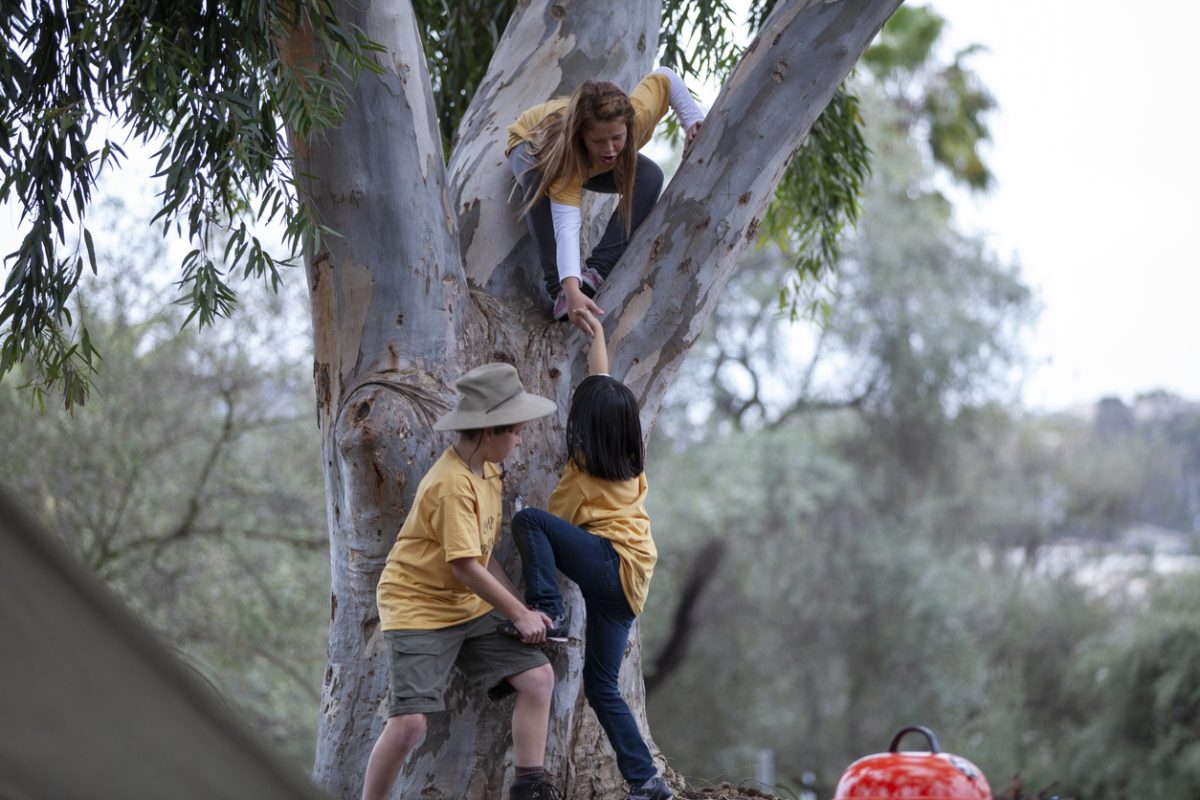
A Deakin University study into children’s physical activity behaviours and their parents’ attitudes towards risk and injury has found low tolerance for adventurous play. Photo: Hero Images.
Parents’ tolerance of risk and injury is a determining factor in how physically active their children are, according to a world-first study out of Victoria’s Deakin University.
The study asked 645 Australian parents what play activities they would let their child participate in, how they felt about play injuries and their beliefs about the benefits of risk-taking.
“We found 78 per cent of parents weren’t keen on their children taking risks when they played and put limits on things like climbing trees, riding bikes fast down hills, rough-housing and play-fighting,” Deakin University School of Health and Social Development and the UK’s Coventry University Centre for Sport, Exercise and Life Sciences PhD candidate Alethea Jerebine said.
“The kids whose parents were tolerant of risk were more physically active and played more adventurously than kids whose parents were risk averse.
“These children were around three times more likely to meet the Australian physical activity guidelines of an hour a day of ‘huff and puff’ physical activity, the kind of activity we know is good for their physical and mental development.”
Ms Jerebine said the results of her study, published in Psychology of Sport and Exercise, could help explain why Australian children aren’t as active as they need to be.
“Although most parents recognise the benefits of risk-taking for their children, many are unwilling to allow their children to play adventurously,” she said. “This suggests that they may be conflicted about the issue.”
A male parent (81 per cent of participating parents were female) of an eight-year-old girl who participated in the study summed up his concerns in two sentences.
“School age kids do not have the right judgement regarding risks. The level of challenges has to be limited and safety cannot be overlooked,” he said.
Ms Jerebine said experiencing risk helped children learn about what they can and can’t do, how to manage risk and keep safe and built confidence and independence.
“We also know children have more mental health challenges, especially after the pandemic,” she explained. “Outdoor play can be a great way to support children’s mental wellbeing as well as their physical development.”
Ms Jerebine’s PhD supervisor and Deakin University Institute for Physical Activity and Nutrition professor Lisa Barnett said children needed to experience challenges in their active play to help them develop ‘physical literacy’.
“Physical literacy is the physical, social, psychological, and cognitive skills a person needs to develop long term physical activity patterns,” she explained.
“A challenge for one child might be an easy task for another child so we need to make sure play environments have lots of different opportunities for different abilities.”
Ms Jerebine is now undertaking further research to understand the attitudes to risk in schools and how this influences children’s opportunities for active play.
Playing it safe: The relationship between parent attitudes to risk and injury, and children’s adventurous play and physical activity was published in Psychology of Sport and Exercise.


